By Jerry LaPointe
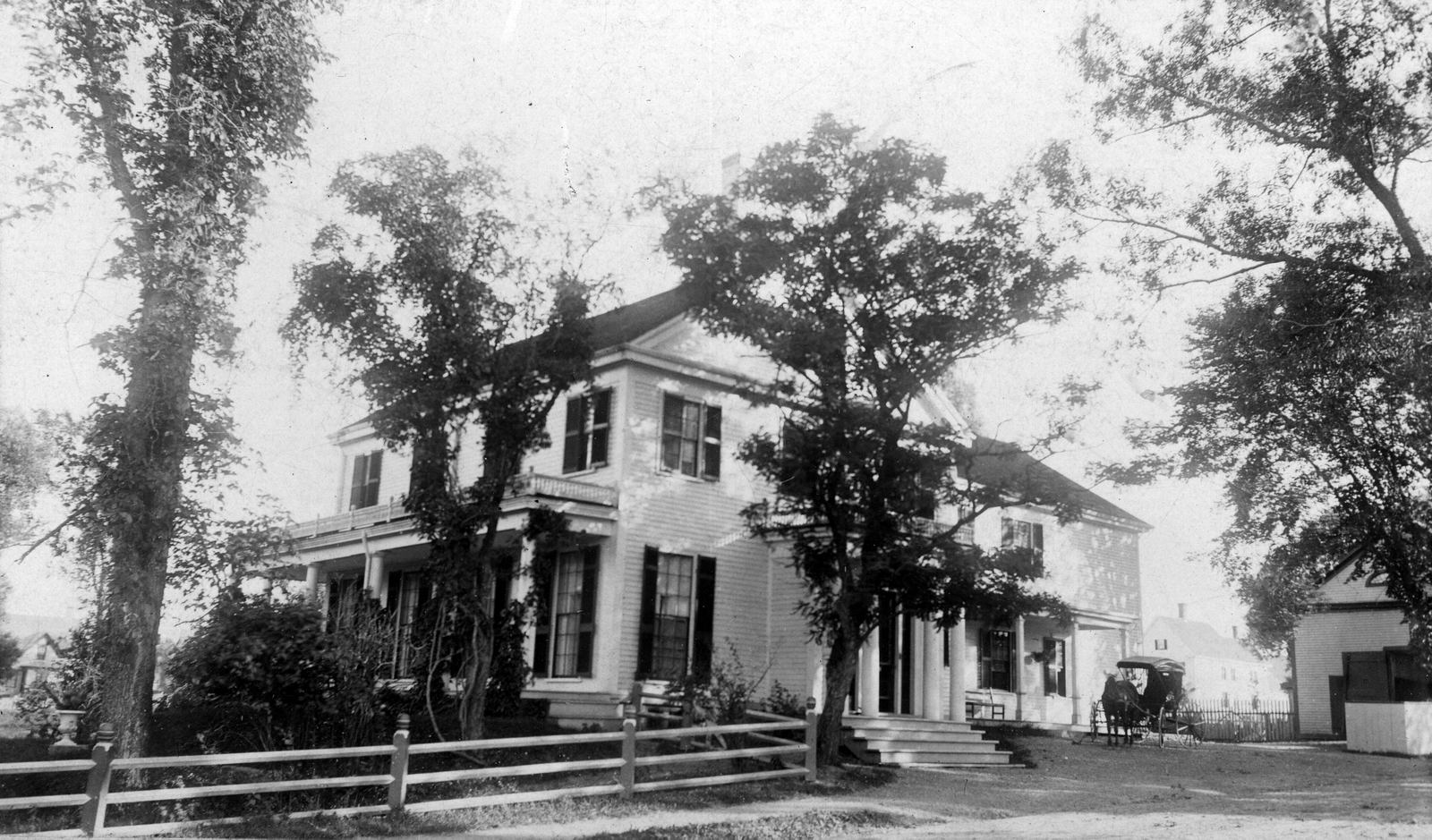
During the last half of the nineteenth century and the first half of the twentieth, Calais was graced with many beautiful homes. Many of the largest and most architecturally significant of these stood along Main Street extending from the bottom of Calais Avenue to the top of Hinckley Hill. In addition, other grand residences lined other streets and were dotted around the city. Although some of these wonderful houses still stand, sadly there are many that have been lost. Since there have been inquiries about the old Calais houses recently, it was decided to write this week’s article on one of the finest old Calais houses which, luckily, still stands on Swan Street. This is the old Dr. Charles Swan house, once referred to as “Swan Farm,” and also known by older citizens of Calais as the Horton house. The two families were connected and together occupied this grand old house for nearly 140 years.
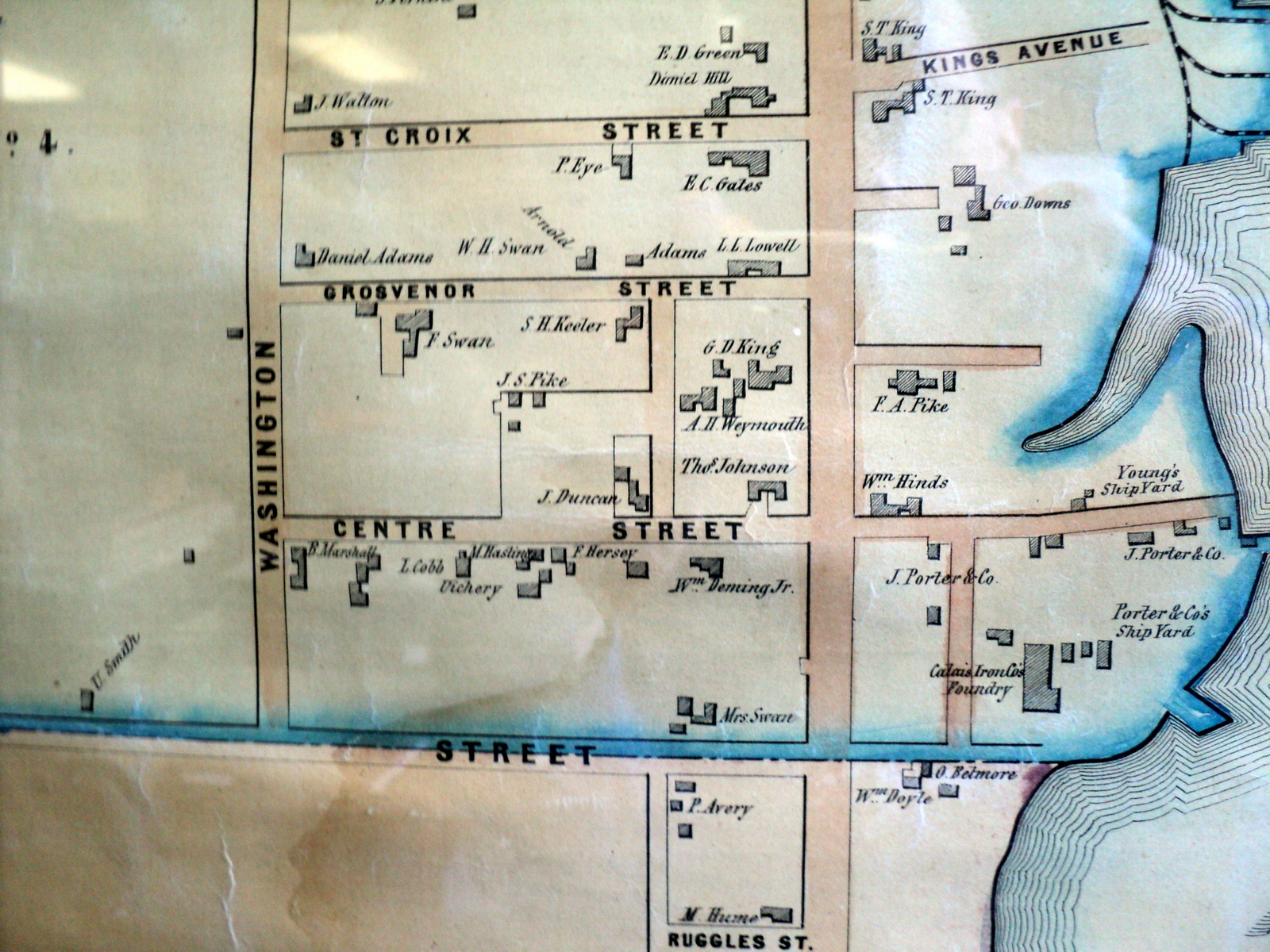

In 1856 Dr. Swan’s lot on what was then Grosvenor Street comprised nearly half the land between what are now Swan and Barker Streets.
The Swan house is a transitional Greek Revival style house built on what was then known as Grosvenor Street in 1835 by Dr. Swan’s father, Francis Swan. Between 1895 and 1898, probably in honor of Dr. Swan’s 50th anniversary practicing medicine in Calais, the street was renamed Swan Street in his honor. When the house was built it occupied almost the entire block, extending up to Washington Street and over to Barker Street, and including all the land almost to Hill Street. Francis Swan, had come to Calais in 1834 and was of the eighth generation of Swan family members who was descended from Henry Swan who came to Salem, Massachusetts in 1638. Francis Swan was living in Groton, Massachusetts when he moved to Maine and began a business in Winslow in 1809, where he remained until he moved to Calais in 1834. His first residence in Calais was a house that stood at the corner of Main Street and North Street where the old Merrill Trust Bank building now stands. Although not much is known about his business endeavors it would seem he was fairly successful, for the house he built only one year after coming to town is both substantial and elegant.
Dr. Swan was the fifth child of Francis and Hannah Swan and was born in Winslow on September 5, 1822, making him eight years old when he came to Calais. He was educated here and was sent over to East Machias to attend Washington Academy after finishing his early education. At that time, Calais did not have a high school and Washington Academy was the nearest place to receive a higher education where one could be prepared to enter college, which he did after completing his studies under the tutelage of the Divinity Professor at Yale University, Samuel Harris, who was teaching at Washington Academy. From there Dr. Swan entered Bowdoin College, graduating with first honors in 1844.
Before entering the field of Medicine, and before graduating from Bowdoin College, Dr. Swan taught in the old High Street school during the winter of 1840-1841. This was an experience that he found both successful and rewarding, and was always a source of great pleasure for him throughout his life. He was destined, it would seem, to become a doctor, however, and so he returned to Calais to begin his study of medicine with Dr. Job Holmes, before returning to Bowdoin to receive a degree from the Medical School there in 1847.
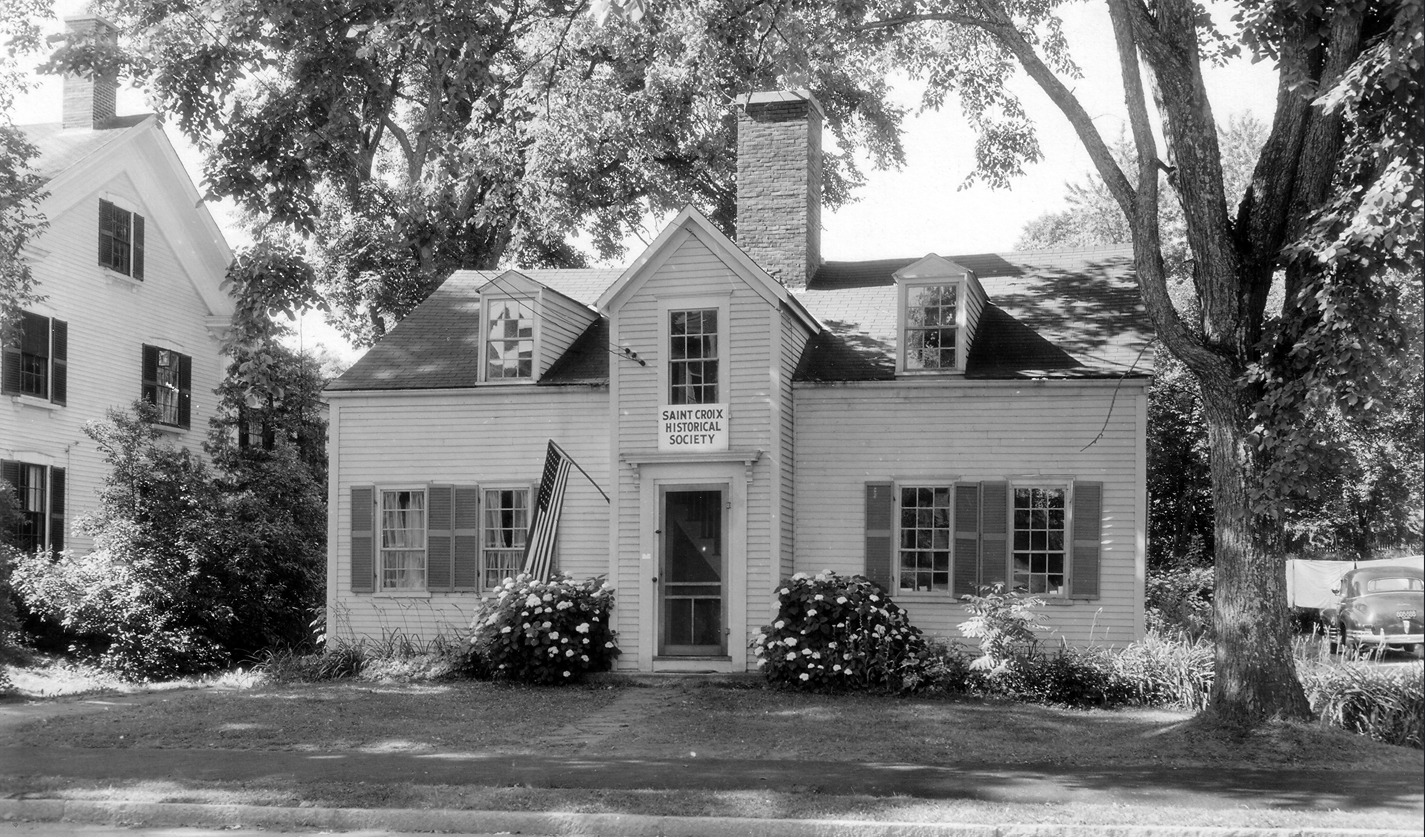
Dr. Swan first practiced medicine with Dr. Holmes in Holmes Cottage on Main Street
In the summer of 1848, he traveled to New York City, spending his time working in the hospitals there. On his way to New York, Dr. Swan stopped in Boston and visited the Massachusetts General Hospital, where he had the great good fortune to be able to observe an operation being performed by Dr. Warren with the use of ether, a very new practice for the time. He observed the administration very carefully and believed he would be able to administer it himself at some point. The next day in New York, he got his chance, probably far sooner than even he realized at the time. He was at City Hospital where the surgeon in charge was preparing to perform an operation without the use of ether. The surgeon lamented that he wished he had someone capable of administering the anesthesia, so Dr. Swan spoke up, saying he had observed its use the previous day and was willing to make the attempt. His attempt was successful and, therefore, it was our own Dr. Charles Swan who administered ether for the first time in a New York City hospital. When he returned home, he went into practice with Dr. Holmes and remained working with him until Dr. Holmes died in March of 1862, after which he went into practice for himself. It is believed that Dr. Swan performed the first operation using ether in Calais in his house on Swan Street, where it has been told he amputated a man’s leg on the dining room table.
In 1849, Dr. Swan married Mary Downes, the daughter of George Downes, another prominent Calais man who lived in the house on Main Street more familiarly known to present-day Calais residents as the old Unobskey house. Sadly, this marriage was not to be a lasting union, as Mary died in 1851, the result of childbirth, an all-too-common occurrence in the nineteenth century. Mary had given birth to twin girls, one of whom also died just a few days after her mother, and the other twin died when she was only two and a half years old. From that time on, Dr. Swan remained unmarried until 1890 when he married a widow, Minerva King Horton, thus connecting the two families from that time forward.
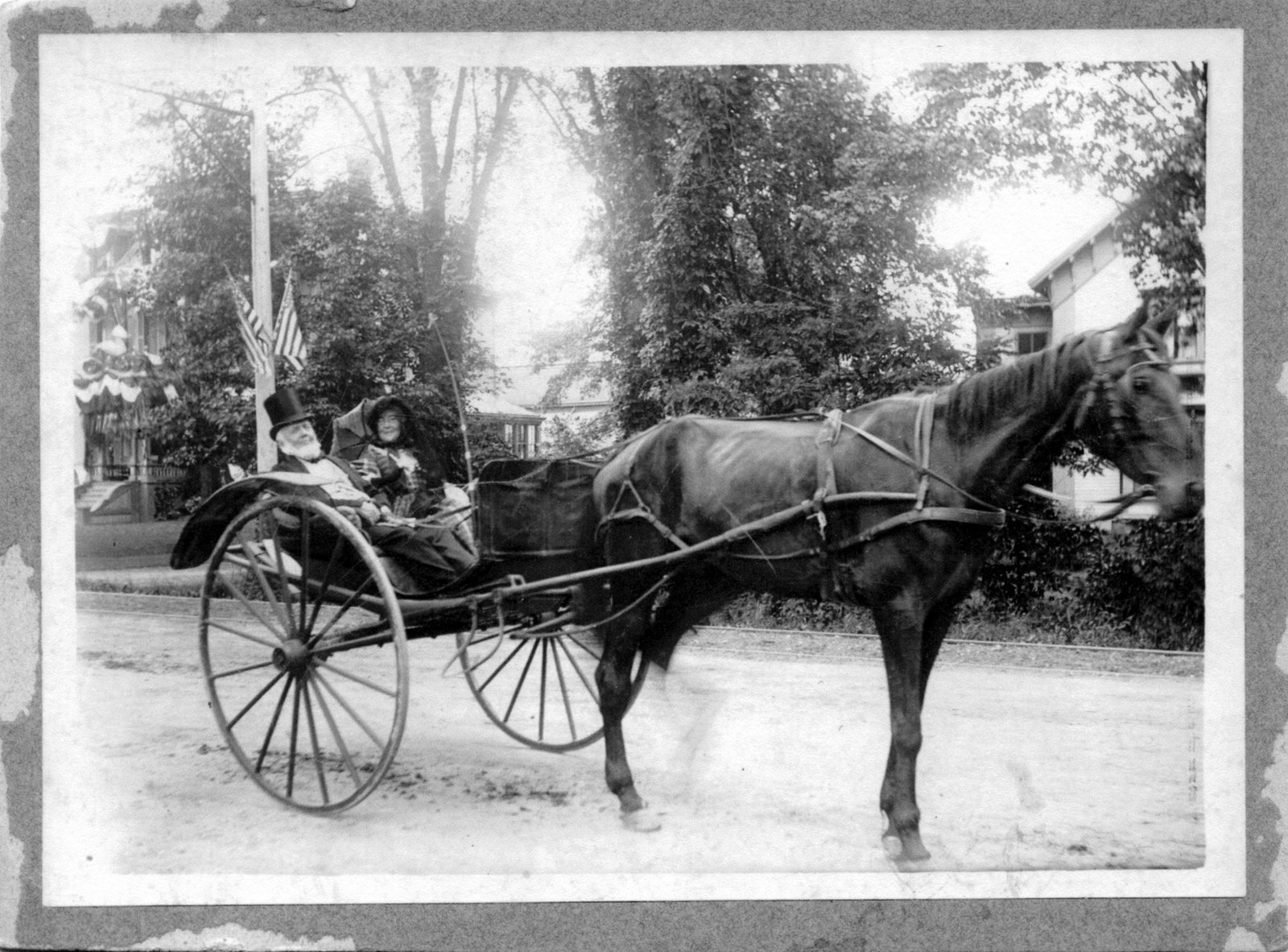
Charles and Minerva Swan on Main Street near the corner of Swan Street
Minerva Helena King was the daughter of Gilman D. King, another prominent Calais citizen with a large house on Main Street which still stands next to the radio station and which was converted into apartments many years ago. Minerva King was born in 1842 and had married Thomas Wilson Horton in 1866. Thomas Horton was a druggist in Calais with a drug store located at the corner of Main Street and Sawyer Avenue, where the Riverview Restaurant is now located. For many years, the upper floor of the building was known as Horton’s Hall. However, it should be noted that for most of the years Thomas Horton operated his drug store, the building was wooden and was replaced by the present brick building after the fire of 1871. Thomas Horton died on December 30, 1875, leaving Minerva a widow with a six-year-old son, Ralph, their only child. She remained a widow for the next 15 years when she married Dr. Swan, who was twenty years older than she. Despite this seemingly wide discrepancy in age, theirs is thought to have been a perfect match.
The 1890s were a busy and happy time at the Swan house, following the marriage of Dr. Swan and Minerva Horton. It was during this time when grand parties were frequently held and when social occasions were reported in The Calais Advertiser. This excerpt is from August 12, 1892:
Our people are still talking of the brilliant society event which occurred last Thursday evening. “One who was there” writes the Times: A charming reception was that given by Dr. and Mrs. Swan to their large circle of friends, on Thursday last. It is many years since the house, where once such gracious hospitality was dispensed, has been thrown open to the public, but now the old traditions were fulfilled, and young and old were welcomed with a heartiness which gave no doubt of the genuineness. The colored lanterns between and among the trees, about the portico and bordering the balustrade, gave welcome before the house was reached, and once within the doors a merry party of friends and strangers held tryst from eight until twelve. The grounds seemed fairyland, and the broad verandas and walks gave ample space for promenade and quiet talk, and the little bridge under the deep shadows of the willows, perhaps for whispered secrets it will never divulge, while the dining room, with its delicate and artistic arrangements, ministered alike to taste and appetite. The young people were never so pretty and attractive, and the older ones more entertaining, and the universal verdict is: “A perfect success.”
***
Such descriptions of events at the house, though far more florid in style than anything one might see today, certainly attest to the type of occasion one might hope to enjoy when invited to a party there.
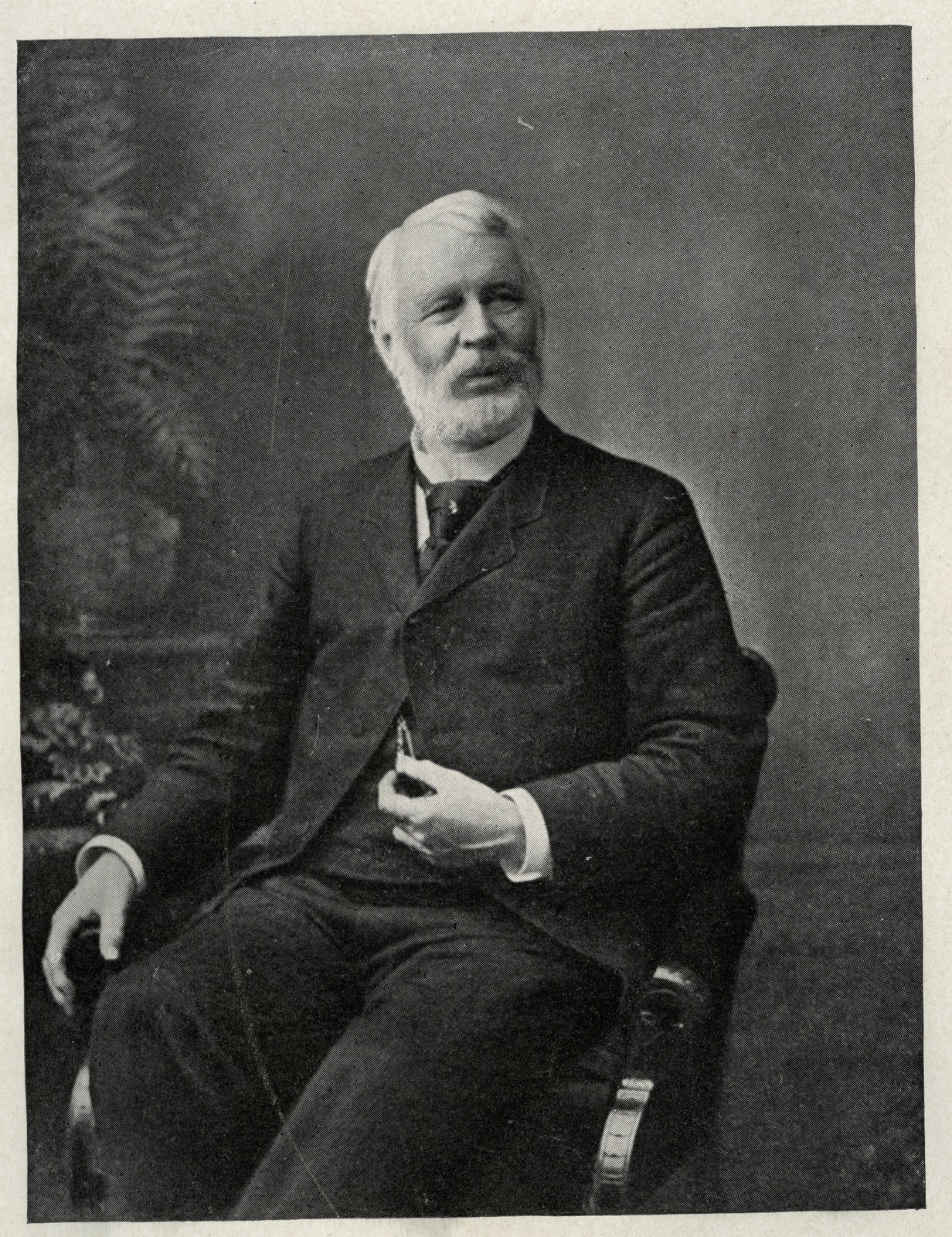
Dr. Charles Swan
Dr. Swan was highly regarded in Calais and was twice elected Mayor of Calais in the 1890s. His high esteem is evident in this newspaper clipping following his first election as Mayor in 1897:
The universal popularity of the newly elected mayor was shown by the grand serenade given him at his residence on Monday evening. A detachment of Co. K Second Regiment Infantry N. G. S. M., accompanied by the first battalion band and several hundred citizens marched to the Doctor’s house on Swan Street and for half an hour the future mayor was made conscious of the feeling his fellow citizens had for him by the alternate music of the band and volleys of the military boys. The appearance of the Doctor at his door was greeted with cheers from the crowd. He responded to the oration in a few well-chosen words, and when the procession marched back to the armory, they smoked some good cigars at our incoming mayor’s expense.
***
It is difficult to imagine any such scene taking place in present day Calais following the election of a mayor. This one is clearly reminiscent of a 1940s Hollywood movie production, yet it provides us with a glimpse into a gentler time and demonstrates the gracious history this house has enjoyed.
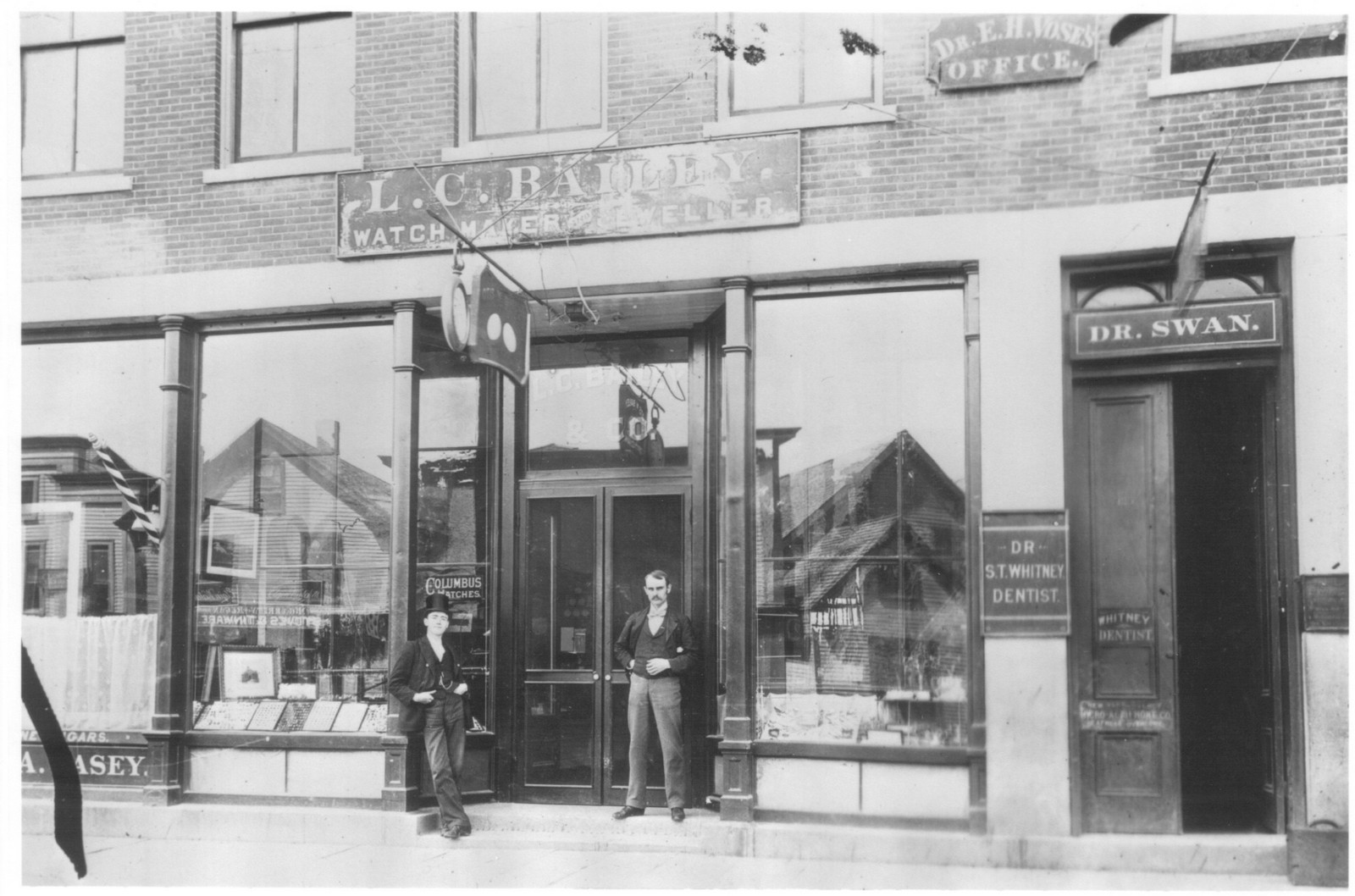
In later years Dr. Swan’s office was over what is now the Riverview Restaurant on Main Street, across from Triangle Park.
In 1898, Dr. Swan was honored with a large reception to mark his 75th birthday and his 50 years’ practicing medicine in Calais. A large party was held in the house, as well as others held in St. Stephen in his honor.
An event of much social enjoyment was the reception Monday evening at Mayor C. E. Swan’s in honor of his 75th birthday and 50th year of his practice of medicine in Calais . . . strains of music enlivened the occasion from the 1st Battalion band stationed on the lawn . . . it was a late hour when the guests dispersed with many heartily expressed wishes that the doctor’s and Mrs. Swan’s days might be lengthened indefinitely and that there might be many happy returns of so delightful an occasion . . . the doctor was the recipient of many elegant gifts . . . a beautiful onyx table and Japanese bronze vase, a jubilee pitcher, a gold letter case and a beautiful Delft plaque.
It was also during the 1890s that a fire broke out in the house, causing considerable damage. An Advertiser article at the time reported:
Saturday evening about 6 o’clock, during the blizzard then prevailing, the firemen were called to the residence of Dr. C. E. Swan, where a lively blaze was in progress. The fire caught up in the attic, and before it was subdued the roof of both the main house and the ell was burned off. Of course, the house was flooded with water, and the furniture and fixtures ruined. The loss will total up some $3,000 or $4,000. The fire is supposed to have been caused by defective wiring.
***
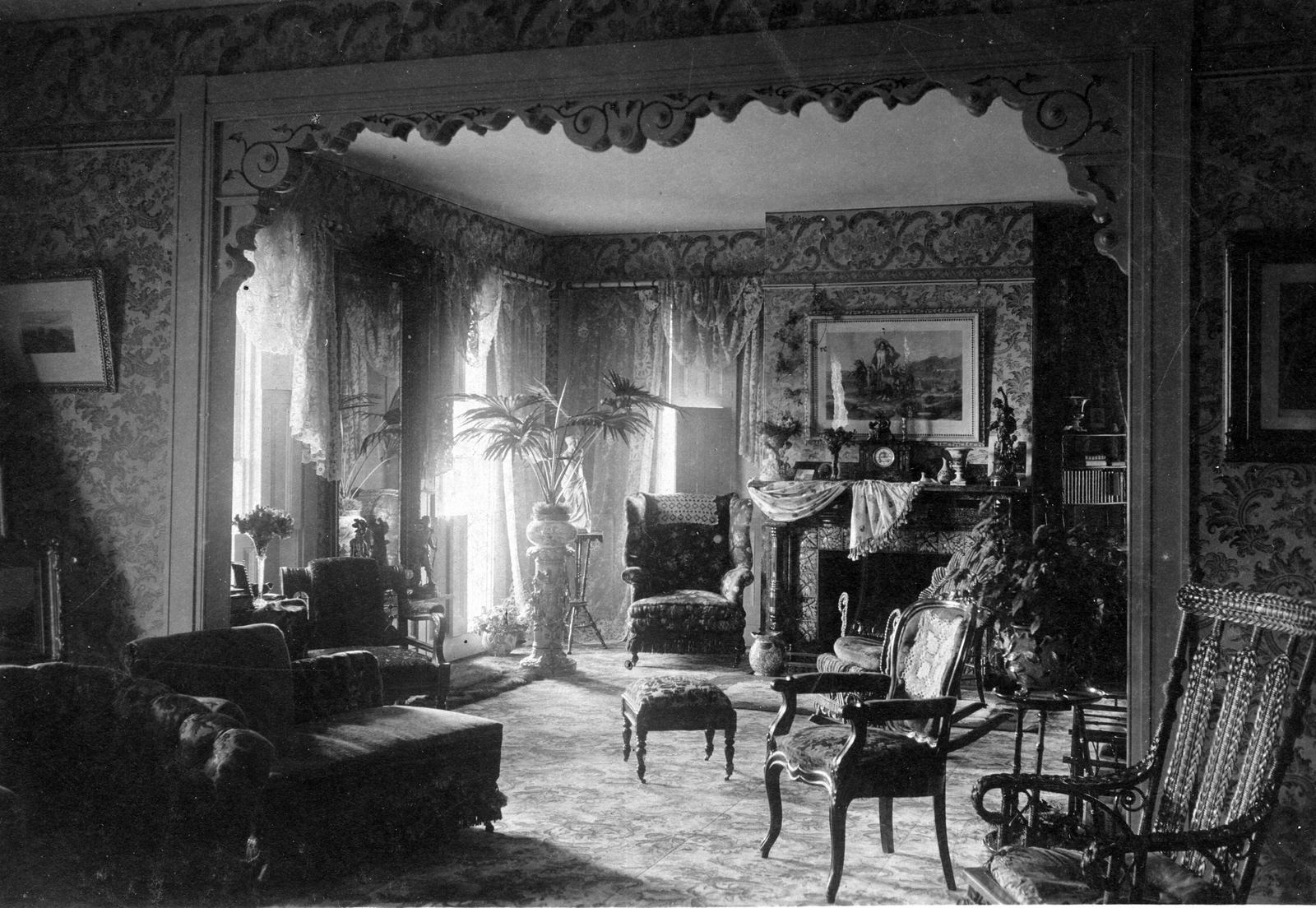
The parlor in the Swan House
In later years, the Horton family members stated that most of the furniture was removed and saved from the fire. This seems plausible since many of the pieces in possession of the family at the time the house was sold were dated well before the 1890s. This being considered, it seems likely that much of the furniture was spared from the blaze and from water damage. However, the house underwent extensive repairs and alterations following the fire. The large double parlor is presently separated by an open archway, decorated with heavy wooden fretwork. It is believed that this fretwork was added during the work that was done following the fire. In the upstairs hall another smaller archway is decorated with 1890s-style fretwork, also probably added at the same time. The wallpaper installed after the fire was a French flocked paper, probably very expensive at the time, in a cream and gold pattern. Although this was removed during the twentieth century, at the time the contents were auctioned in 1970, there were still rolls of this flocked paper in the attic. In older pictures of the house, a balustrade can be seen decorating the roof of the front verandah, as well as the extended vestibule. These may have been removed when they deteriorated and a new roof was being installed, or they may have been lost in the fire. It is unknown. Either way it is lucky the house was saved from total destruction and that it was restored to its former glory, ensuring its existence to the present day.
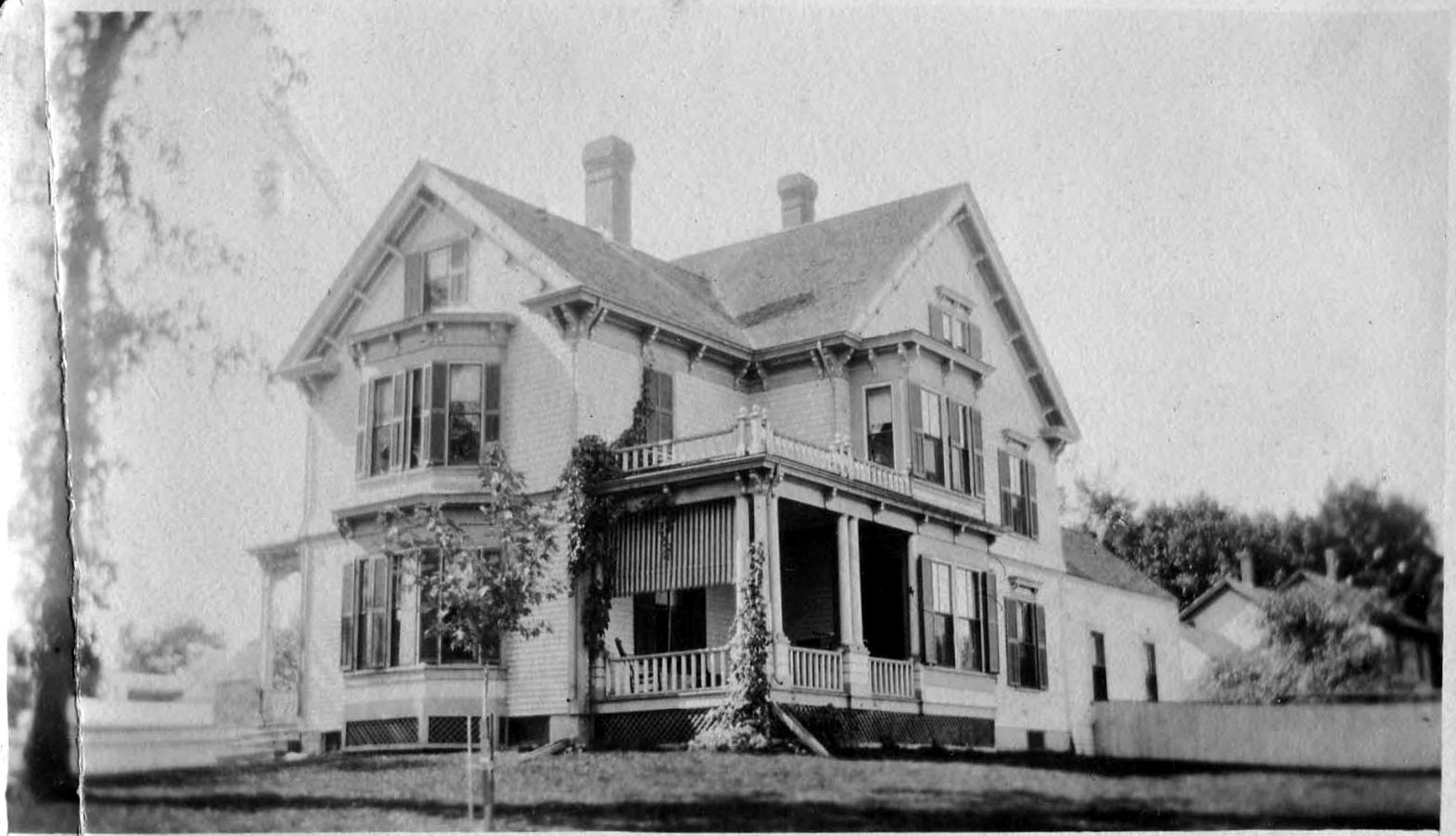
The Horton house, across the street from the Swan House. It was owned later by the Jewett family.
In 1898, Minerva Swan’s son, Ralph Horton, was married to Nellie Murchie at her father’s house on Marks Street in St. Stephen. To mark their marriage, Dr. and Mrs. Swan had a new house built for them across the street from “Swan Farm.” It was built in the Queen Anne style, popular at the time, and it still stands opposite the old Swan house. Here the couple began their own family, which was to include five children—one boy, Thomas Webster Horton born in 1901, and four girls: Alice Swan born in 1903, Eleanor Murchie born in 1904, Harriet Helena born in 1908, and Marion Gertrude born in 1916.
In 1908, Dr. Charles E. Swan died at the age of 86. At the time he was reported to be the oldest practicing physician in the state of Maine. He had served as a trustee of Bowdoin College, as well as serving as a member of the board of overseers. He was a member of the American Academy of Medicine and the Council of Physicians and Surgeons of New Brunswick. Upon his death, Mayor William Fowler issued the following proclamation to the citizens of Calais:
One of our oldest and most respected citizens has gone to his rest. No more in this world will we feel the warm clasp of his hand or hear his kindly greeting. In the fullness of years, honored and respected by all, Charles E. Swan, M. D. passed away, the thirteenth inst. The last tribute of respect will be paid to his remains on Wednesday, July 15th at 3 o’clock, P. M. It is earnestly requested that, as a mark of respect and of the universal esteem in which he was held as a citizen, physician and friend, and as a tribute to the memory of his long and helpful life, all places of business will be closed between the hours of three and four o’clock P. M. on Wednesday, July 15th during the funeral services. Calais, Me., July 14, 1908
The history of the Swan house will be continued next week. After Dr. Swan’s death the family continued to live in the house for many decades but in straitened circumstances, first as a result of an unwise investment in a mink farm on South Street and later the Depression.
(continue to Dr. Swan House, part 2)
